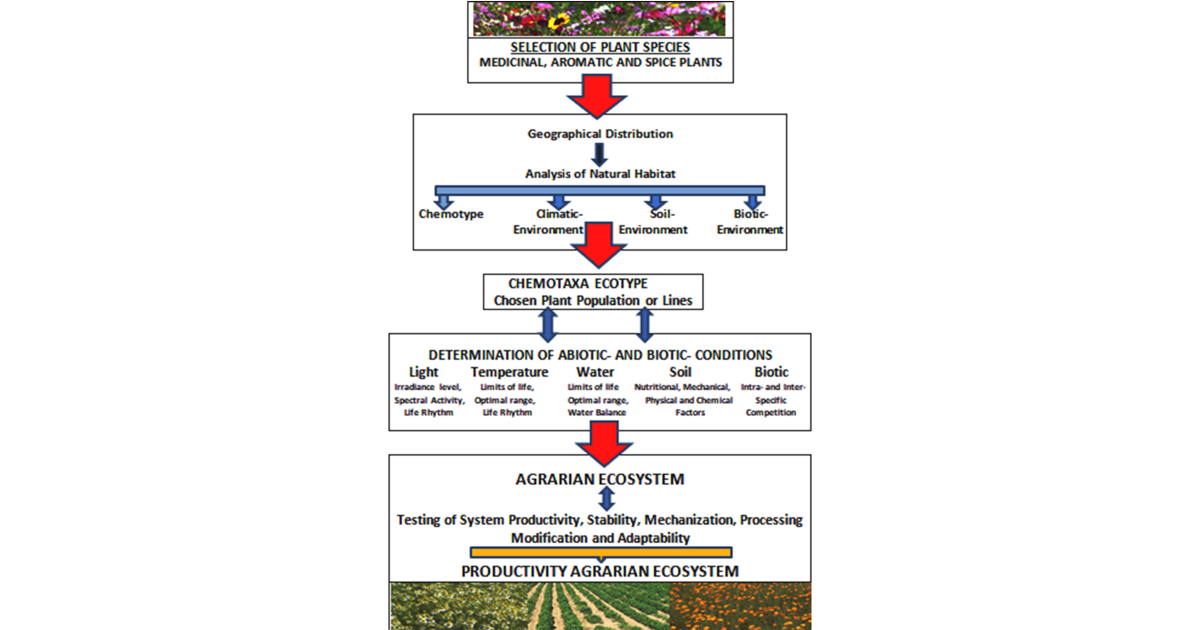Agricultural Aspects of Medicinal, Aromatic and Spice Plants' Cultivation, Harvest, Processing and Conservation
A special issue of Agronomy (ISSN 2073-4395). This special issue belongs to the section "Horticultural and Floricultural Crops".
Deadline for manuscript submissions: 30 April 2026 | Viewed by 5414

Special Issue Editors
Interests: cultivation; essential oils; herbs; natural substances; isolation; innovations; post-harvest processing; products
Special Issues, Collections and Topics in MDPI journals
Interests: plant genetic resources; chemotypes; biological activity; ethnopharmac; microbiology
Special Issues, Collections and Topics in MDPI journals
Special Issue Information
Dear Colleagues,
The cultivation of medicinal, aromatic and spice plants depends on a sufficient amount of good-quality biological material during the establishment of stands. The success of special crop cultivation depends on the selection of good-quality seeds or planting material, especially in varieties that fulfill a yield requirement together with qualitative demands on an active ingredient. The advantages of cultivating medicinal, aromatic and spice plants in comparison to wildly growing medicinal plant species are as follows:
- the inspection of regulatory mechanisms in plant monoculture;
- the verification of agro-biological control of stands;
- higher, more stable and higher-quality yields;
- the possibility of using mechanization;
- better harvest access, conservation and processing of high-quality raw material.
An important parameter of cultivated medicinal plant species is the yield of the main product, and a high yield can be achieved only in optimal conditions. The production ability of stands is influenced by many external agri-ecological conditions, e.g., the climate, soil, and field localization. Important elements for optimal technology in medicinal plant cultivation are the selection of biological material (certificate varieties), soil cultivation, seeding and planting, nutrition and fertilization, and the control of biotic factors (weeds, pests and diseases).
This Special Issue of Agronomy is recommended not only to those involved in research on the cultivation of special crops and their harvest and processing, but also to organic farming and good agricultural and production practices.
Prof. Dr. Ivan Salamon
Dr. Milica Aćimović
Guest Editors
Manuscript Submission Information
Manuscripts should be submitted online at www.mdpi.com by registering and logging in to this website. Once you are registered, click here to go to the submission form. Manuscripts can be submitted until the deadline. All submissions that pass pre-check are peer-reviewed. Accepted papers will be published continuously in the journal (as soon as accepted) and will be listed together on the special issue website. Research articles, review articles as well as short communications are invited. For planned papers, a title and short abstract (about 250 words) can be sent to the Editorial Office for assessment.
Submitted manuscripts should not have been published previously, nor be under consideration for publication elsewhere (except conference proceedings papers). All manuscripts are thoroughly refereed through a single-blind peer-review process. A guide for authors and other relevant information for submission of manuscripts is available on the Instructions for Authors page. Agronomy is an international peer-reviewed open access monthly journal published by MDPI.
Please visit the Instructions for Authors page before submitting a manuscript. The Article Processing Charge (APC) for publication in this open access journal is 2600 CHF (Swiss Francs). Submitted papers should be well formatted and use good English. Authors may use MDPI's English editing service prior to publication or during author revisions.
Keywords
- agricultural technology and cultivation practices
- herbs
- harvest
- post- harvest
- raw material
- quality
Benefits of Publishing in a Special Issue
- Ease of navigation: Grouping papers by topic helps scholars navigate broad scope journals more efficiently.
- Greater discoverability: Special Issues support the reach and impact of scientific research. Articles in Special Issues are more discoverable and cited more frequently.
- Expansion of research network: Special Issues facilitate connections among authors, fostering scientific collaborations.
- External promotion: Articles in Special Issues are often promoted through the journal's social media, increasing their visibility.
- Reprint: MDPI Books provides the opportunity to republish successful Special Issues in book format, both online and in print.
Further information on MDPI's Special Issue policies can be found here.






